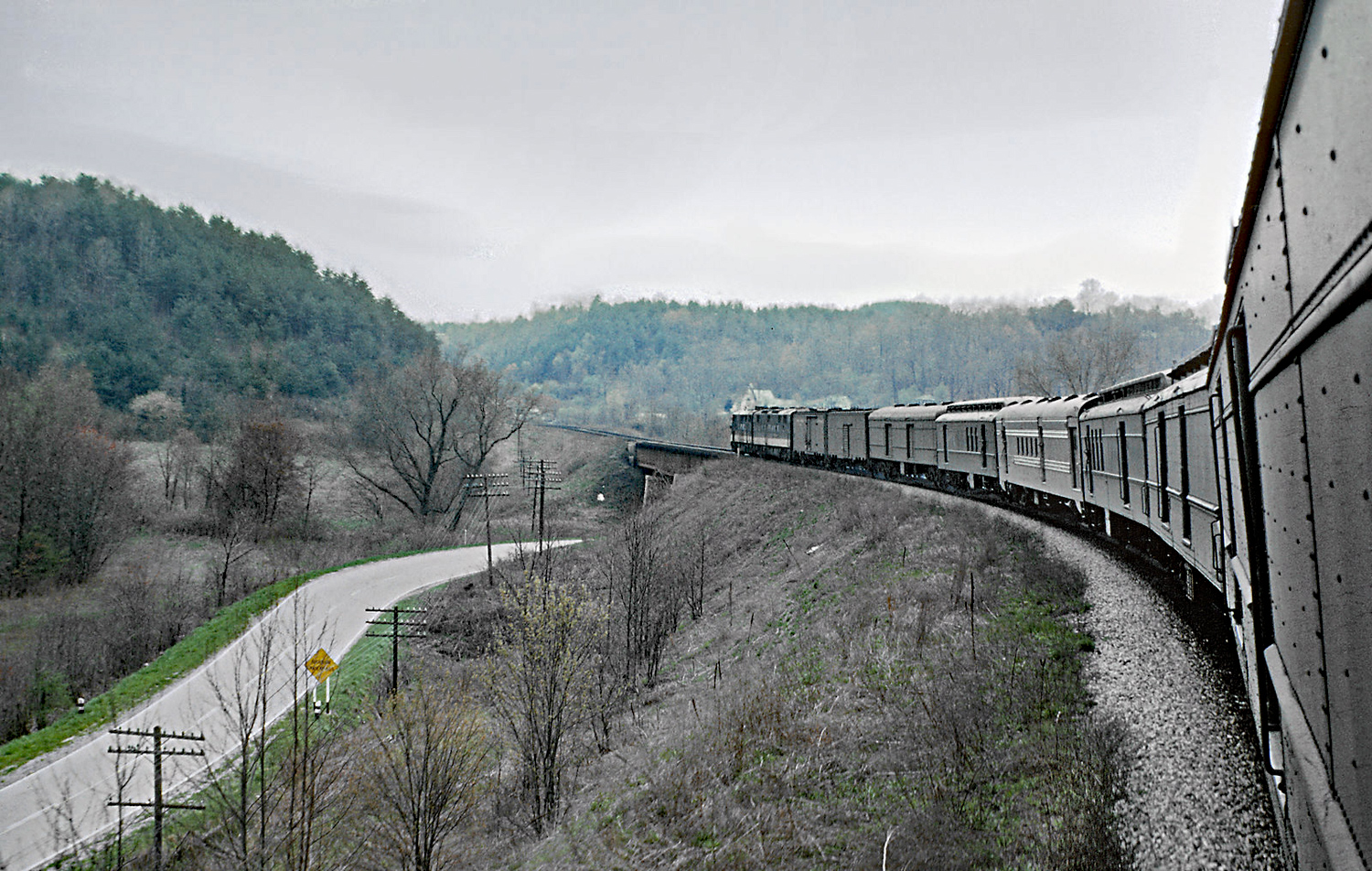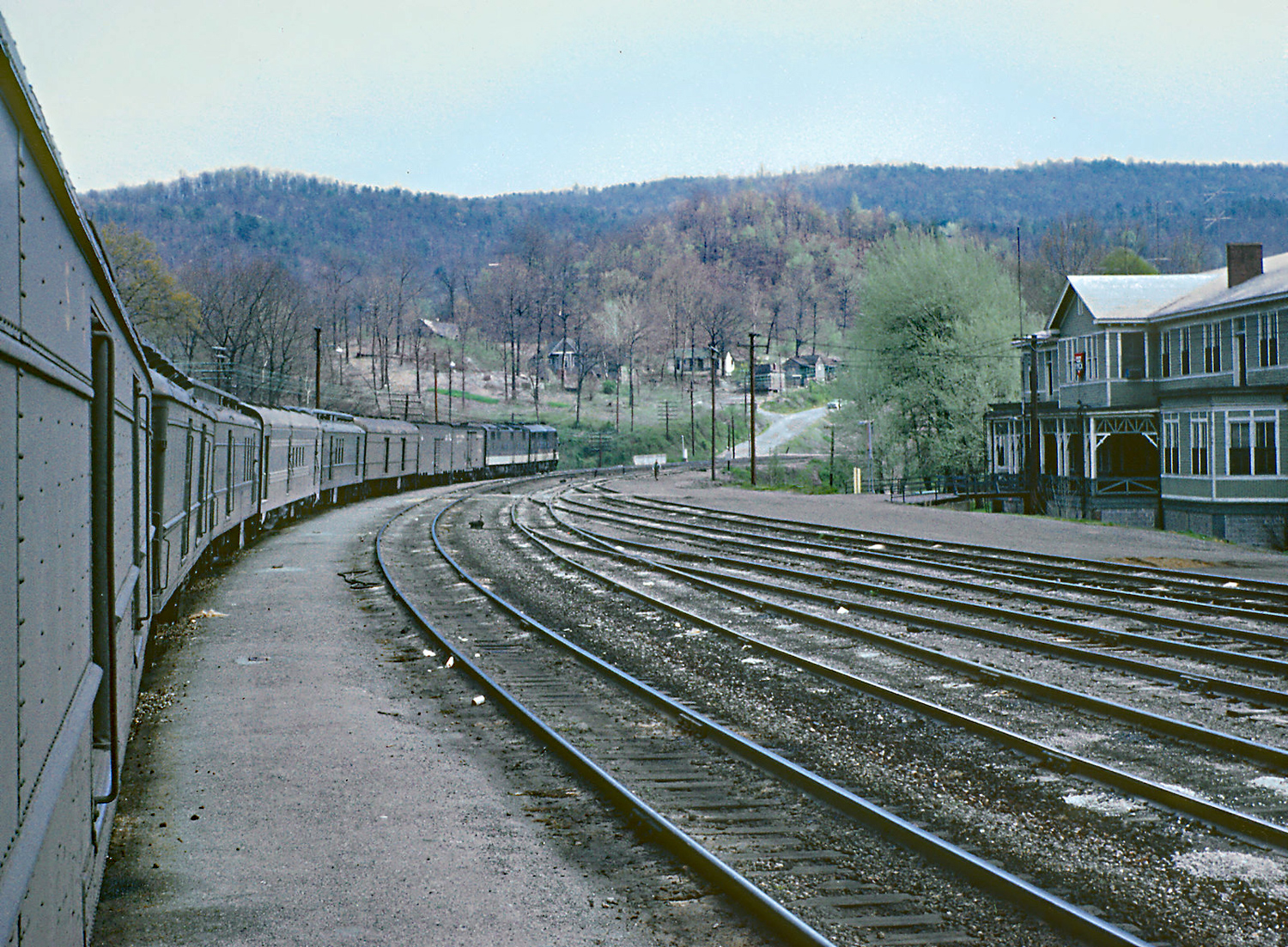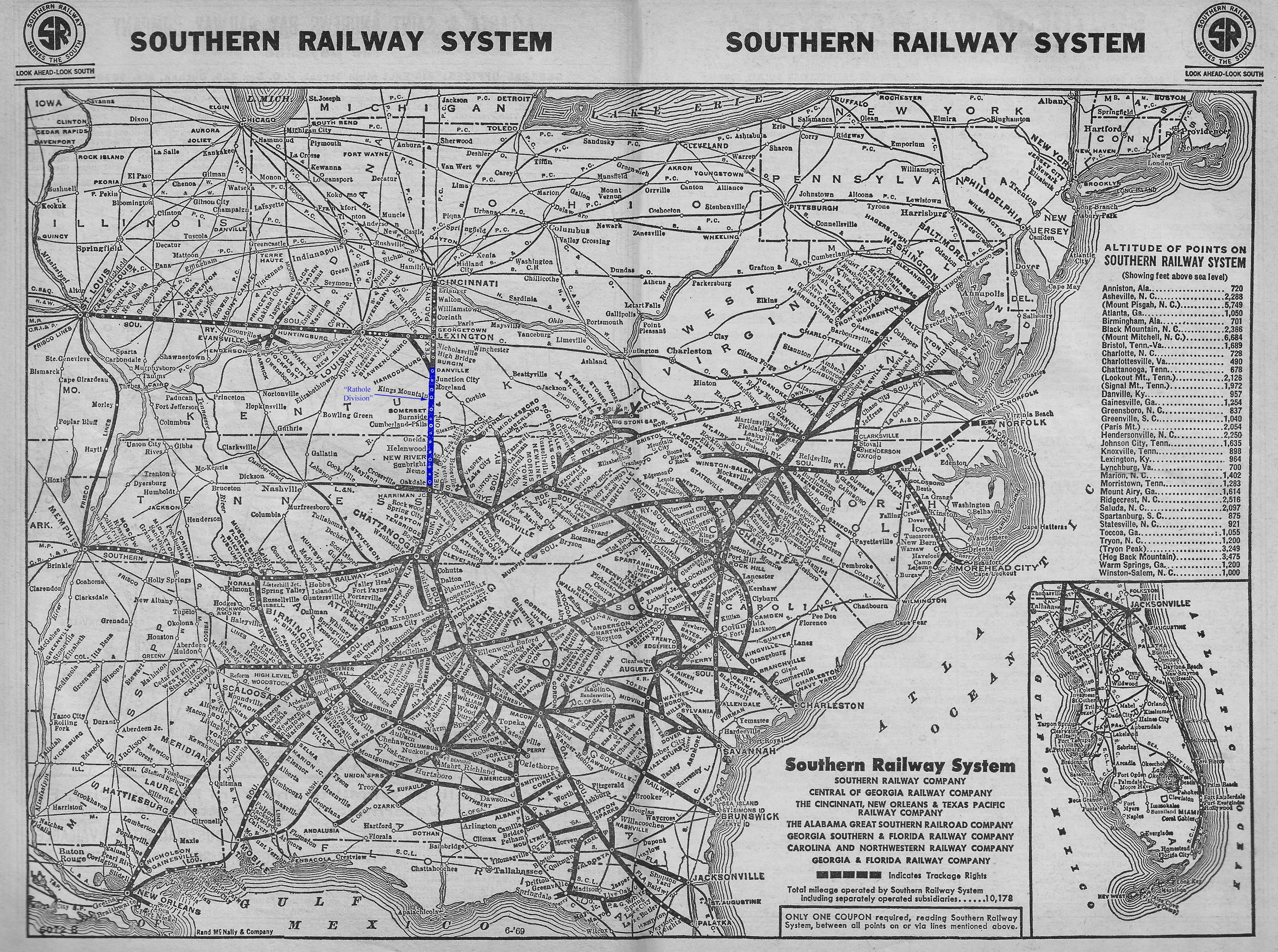Southern's "Rathole Division": Map, History, Photos
Last revised: August 24, 2024
By: Adam Burns
The Southern Railway is often remembered as a southeastern road serving the Carolinas, Georgia, and Florida.
However, it also operated several lines through the southern Appalachian chain and moved a substantial amount of coal in southwestern Virginia and extreme eastern Tennessee.
Another notable corridor was the famed "Rathole Division" through Kentucky and Tennessee. It provided the Southern with a through route from Cincinnati to Chattanooga, Birmingham, and ultimately New Orleans.
Technically, this stretch of the Southern was known as the 2nd District of subsidiary Cincinnati, New Orleans & Texas Pacific (CNO&TP). For many years the corridor was plagued by numerous tunnels, which led to its famous nickname.
The line's importanace as a major freight artery resulted in the Southern spending millions of dollars over the years to daylight or bypass these obstacles. This task was finally completed in the 1960s.
While one may no longer see colorful "Tuxedo" locomotives sporting the "Southern" name today, the Rathole remains an important artery under Norfolk Southern.
Photos
 In a scene that appears to have been taken from a baggage car of Southern Railway's train #3, the "Royal Palm," it traverses the Cincinnati, New Orleans & Texas Pacific, otherwise known as the Rathole Division, at rural Sunbright, Tennessee on April 11, 1963. Roger Puta photo.
In a scene that appears to have been taken from a baggage car of Southern Railway's train #3, the "Royal Palm," it traverses the Cincinnati, New Orleans & Texas Pacific, otherwise known as the Rathole Division, at rural Sunbright, Tennessee on April 11, 1963. Roger Puta photo.History
While the "Rathole Division" became an interesting and fascinating operation to railfans, the Southern viewed it as a frustrating bottleneck and headache in the days prior to the line's daylighting.
The corridor's history began on May 4, 1869 when the city of Cincinnati passed the Ferguson Act, which created the Cincinnati Southern Railway. This project was envisioned to provid a direct route from the Queen City to Chattanooga, Tennessee.
After all necessary charters were acquired the CS began construction on December 23, 1873. The railroad was built to the five-foot broad gauge and required six years to complete.
 The same train as seen above is stopped at Oakdale, Tennessee. This location was the Rathole Division's southern terminus, noted by the small yard and bunkhouse at right. Roger Puta photo.
The same train as seen above is stopped at Oakdale, Tennessee. This location was the Rathole Division's southern terminus, noted by the small yard and bunkhouse at right. Roger Puta photo.The line reached Chattanooga on December 10, 1879 and officially opened to passenger traffic on February 21, 1880 with freight trains beginning operations a few weeks later on March 8th. The line covered a total of 338 miles between Gest Street Yard in Cincinnati to Terminal Station in Chattanooga.
While the corridor snaked its way through the southwestern edge of the Appalachian Mountain chain, which offered incredibly scenic views, it required a total of 105 bridges and 27 tunnels. Altogether, these structures totaled 5 miles in length if lined up from end-to-end!
The line between Danville, Kentucky and Oakdale, Tennessee featured so many tunnels (23), crews soon dubbed the route as the "Rat Hole." During the Southern years it was referred to as the "Rathole Division."
The line only operated as a broad gauge route for six years when efforts were made to regauge the corridor to 4 feet, 8 1/2 inches for more improved and efficient operations. Incredibly, track workers were able to complete entire line in just 13 hours on May 30, 1886.
Cincinnati, New Orleans & Texas Pacific Railway
The formation of the Cincinnati, New Orleans & Texas Pacific Railway was actually nothing more than a corporate ploy by CS trustees to line their pockets with more profits. However, their plan fell through before any significant earnings could be accrued.
The CNO&STP was created on September 7, 1881 to lease the entire CS system. While successful in this endeavor the new paper company soon fell into bankruptcy and was subsequently acquired by the Southern Railway.
Following this takeover the city of Cincinnati had citizens vote on a bond measure to sell the CS to the Southern; the move was ultimately rejected on August 3, 1896.
For over a century the city continued to own the railroad with the Southern - and Norfolk Southern after 1982 - making lease payments on the property. In return, the railroad retained all derived revenue its generates and maintains the line as necessary. This finally changed in November, 2022 when the city sold the Cincinnati Southern Railway to NS for $1.62 billion.
Southern Railway
From an operational standpoint as early as the late 19th century the Southern was seeing a steady increase in traffic along the division. With a growing bottleneck on its hands the railroad began bypassing and daylighting some of the tunnels as early as 1901.
The issue went beyond this, however, as the Southern was also limited to the size of the locomotives able to operate the line due to asphyxiation and overheating issuses. In most cases, only the smallest 2-8-2 Mikados in freight service and 4-6-2 Pacifics for passenger trains utilized the line.
Not surprisingly, when new Electro-Motive FT diesels began arriving between 1939-1941, one of the first regions they were assigned was the famed "Rat Hole."
Map (1969)
Other early diesels to run the line included Fairbanks-Morse Train Masters, newer F models, and SD24s. Over the years the tunnels continued to be daylighted to the point that only 13 remained by 1950.
By the 1960s intermodal, automobiles, and piggyback/TOFC (Trailer-On-Flatcar) freight was growing in volume and to meet this demand the railroad and Cincinnati elected to update the remainder of the route in 1961.
The project took 18 months, cost $32 million and saw 25 miles of new rail line laid with nine tunnels bypassed, three new bores drilled, and one other enlarged.
Improvements
Other updates to the corridor included several new, deep fills and a majestic 1,618-foot bridge spanning the New River that was 307 feet and five inches above the water at its highest point.
The new "Rathole Division" opened for freight traffic officially at 12:05 a.m. on July 10, 1963. Interestingly, even following all the improvements the deep cuts and remaining tunnels still gave the route an appearance worthy of the "Rat Hole" title.
Today, the 2nd District, which the Southern referred to as a "high, wide, and handsome railroad" after it was daylighted, continues to move significant tonnage under successor Norfolk Southern.
(Thanks to "Into The Clear" piece by David P. Morgan from the January, 1964 issue of Trains and "As The Rabbit Chases The Beagle Up The Rathole" by Mike Iczkowski from the April, 1976 issue of Trains as primary references for this article.)
Additional Sources
- Murray, Tom. Southern Railway. St. Paul: Voyageur Press, 2007.
- Schafer, Mike. More Classic American Railroads. Osceola: MBI Publishing, 2000.
Recent Articles
-
Oregon Railroad Museums: A Complete Guide
Apr 25, 25 03:11 PM
With its rich tapestry of scenic landscapes and profound historical significance, Oregon possesses several railroad museums that offer insights into the state’s transportation heritage. -
North Carolina Railroad Museums: A Complete Guide
Apr 25, 25 02:56 PM
Today, several museums in North Caorlina preserve its illustrious past, offering visitors a glimpse into the world of railroads with artifacts, model trains, and historic locomotives. -
New Jersey Railroad Museums: A Complete Guide
Apr 25, 25 11:48 AM
New Jersey offers a fascinating glimpse into its railroad legacy through its well-preserved museums found throughout the state.


